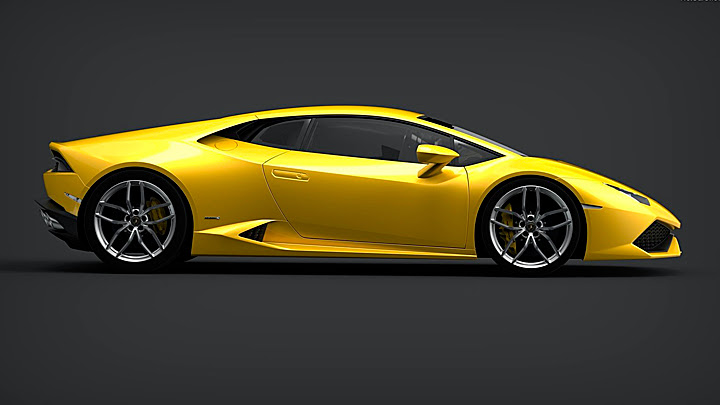
The biggest reason for that increase is that many automakers started to enter new categories, in order to extend their image to other products and therefore sell more. The purists already feel nostalgic remembering of BMW only making urban luxury vehicles, Land Rover sticking to tough SUVs and Porsche restricted to sports cars, for example, but the truth is subversions such as X5, Evoque and Cayenne helped their automakers to stay at the market. The VW Group had doubts and technical problems at first, but now it’s official: Lamborghini will be one of those automakers in a couple of years. The company is developing a whole new platform exclusively for their luxury SUVs, and one of them will be Urus.
However, the Italians have actually concocted another getaway from their roots much earlier. Have you noticed how the Ferraris look each one for a different kind of customer? 458 Italia would be a compact race car, while California is an everyday sports roadster, F12berlinetta is a high-end tourer and FF craves for off-road tracks. Despite having a smaller line, their countrymen of Sant’Agata Bolognese started a similar strategy eleven years ago. But Gallardo emerged as much more than a cheap Murciélago. The main intention was to concile the brand’s qualities with a mechanical set capable of being used every day, not only in track weekends. Such strategy ended creating the best-selling Lamborghini ever.






Gallardo reached its second phase in 2008, but now it’s time to retire. Huracán takes the Spanish expression for hurricane to describe a coupé whose styling follows the exact opposite path of Veneno’s. While Lamborghini’s flagship features meticulous details at the individual elements, like lights or air vents, Huracán gave much more attention to the sheetmetal. If the headlights look too discreet, the three-dimensional effect around the windows makes the car look even wider. But even though Lamborghini’s design language has invested more in details at the exterior over the years, none of them leaves the sharp-wedge silhouette. Today it looks much smoother than Countach’s, but it still fuses front, center and rear in an unmistakable way.
But mentioning Countach reminds of Huracán’s other characteristics. While the styling has a great connection with the automaker’s past, the mechanical part is a perfect sign of how times have changed. Since this is another division of the VW Group, the new car doesn’t escape from some corporate strategies which certainly frowns most fans. One of them is using the MSS modular platform, which is dedicated to sports cars and will underpin Audi R8’s next generation. On the other hand, we’re talking about Huracán sharing a cutting-edge chassis made of carbon fiber and aluminum which helps the car to achieve only 1,422 kg of dry weight – lighter than Gallardo even on its Superleggera variations.


From the few official pictures it’s possible to say the car’s interior was inspired on its bigger brother’s, which is Aventador. Everything features strong, angular shapes, which come in several color schemes created with Nappa leather and Alcantara. The car’s top-notch technologies start to appear with the customizable 12.3” TFT screen that works as the instrument cluster, but there are also the typical performance options for the driver to choose according to how it’s about to use the car. All of them follow the main orientation of Strada (street), Sport and Corsa (race). There are also a large package of electronic safety systems as standard, including carbon-ceramic brakes.
When it comes to the engine, Huracán carries over the centrally-positioned 5.2L V10, with all-wheel-drive. But compared to Gallardo’s, the propeller received some tweaks in order to reach 610 hp and 57 kgfm. The car uses start/stop and the new IDS (Iniezione Diretta Stratificata) systems, the latter capable of working with both direct and indirect injections. The new car always uses a dual-clutch, seven-speed LDF (Lamborghini Doppia Frizione) transmission and reaches 325 kph, going from 0 to 100 kph in 3s2 and to 200 kph in 9s9. Besides that, it already meets EU6 regulation and features 12.5 l/100 km consumption and 290 g/km of CO2 emissions. Huracán’s first units will hit the streets on the next trimester.
Lançamento no Brasil (25/09/2014)
Foi anunciada pela Via Itália a chegada das duas primeiras unidades do Huracán ao Brasil. A importadora oficial da Lamborghini venderá o modelo por R$ 1,85 milhão, na variação LP 610-4. Ele conta com um motor 5.2 V10 que usa injeção direta e indireta de combustível e alcança potência de 610 cv e torque de 57,1 kgfm. Seu câmbio é um automatizado de dupla embreagem e sete marchas LDF (Lamborghini Doppia Frizione), e trabalha em conjunto com a tração integral. O veículo pode operar em três modos de condução, Strada, Sport e Corsa, e vai de 0 a 100 km/h em 3,2 segundos, com uma máxima de 325 km/h. O pacote de equipamentos inclui interior em Alcantara e Nappa e quadro de instrumentos com tela de 12,3”.